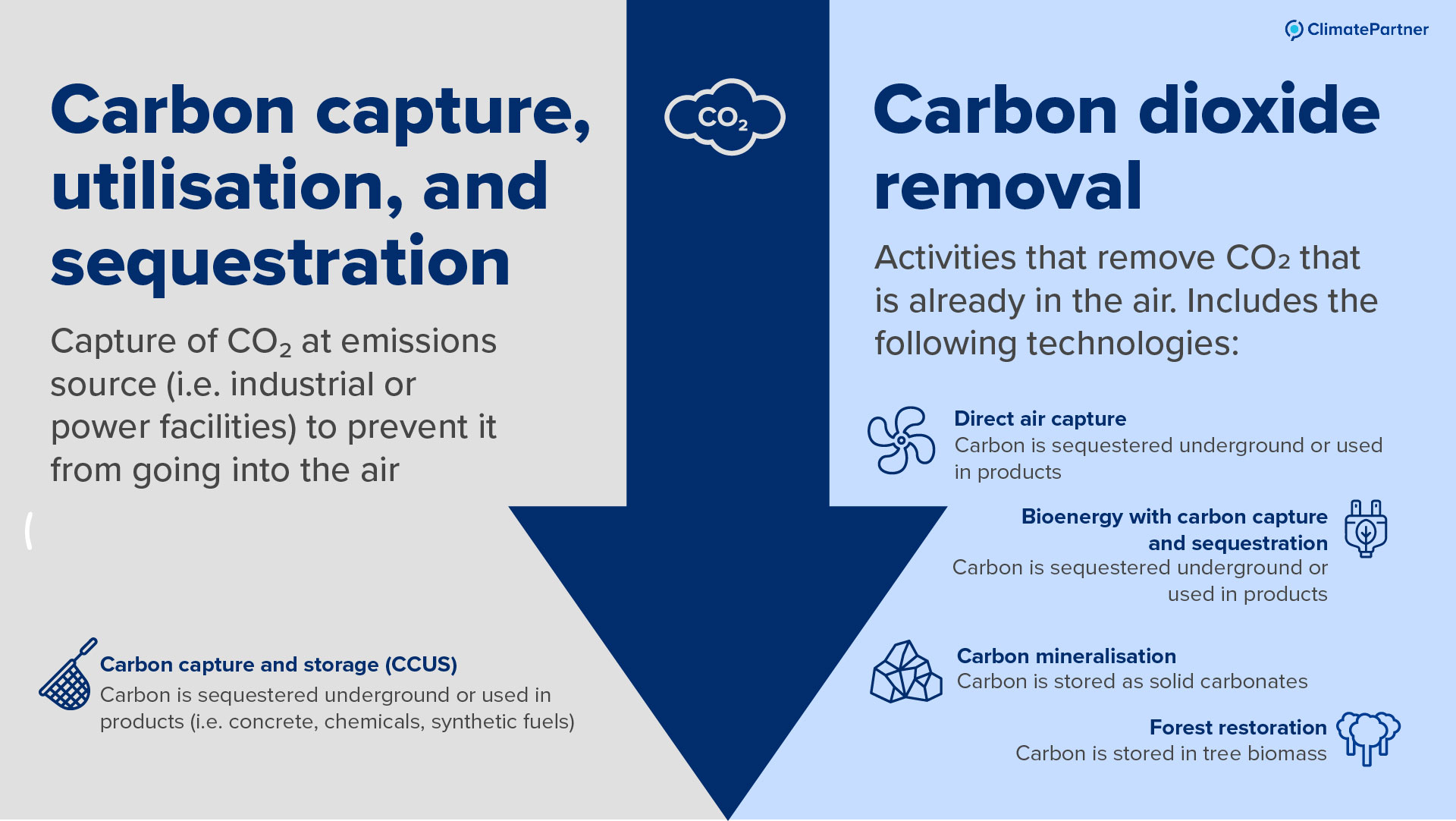What is carbon capture and storage (CCS)?
Carbon capture and storage (CCS) is a technology that reduces emissions by capturing greenhouse gases (GHGs) from industrial processes or power plants before they reach the atmosphere, then storing them deep underground for centuries or even millennia.
To effectively address the current climate crisis, we need solutions that go beyond reducing or avoiding carbon emissions – we need to remove carbon dioxide from the atmosphere and store it permanently.
Carbon capture, utilisation and sequestration (CCUS) is not the same as carbon removal, as CCUS captures emissions at their source, while carbon removal extracts carbon already in the atmosphere using methods like tree restoration and direct air capture.

Carbon capture technology
The two main carbon capture methods are nature-based and technological solutions. Nature-based solutions include reforestation, peatland restoration, and regenerative farming. The captured carbon is then stored in forests, wetlands, or the ocean.
Technological solutions, on the other hand, use human-engineered methods to do the same, but with the advantage of locking the carbon away for a much longer time.
How does it work? The carbon capture process involves these three main steps:
- Carbon capture: Unlike other technical methods, CCS captures carbon emissions directly from the source before it reaches the atmosphere. Sites of large-scale industrial activities, such as power plants or cement and steel plants, are ideal for carbon capture since they are among the fastest growing source of emissions. During this step, carbon dioxide is separated from the other gases emitted.
- Transport: Once captured, the carbon is compressed into a liquid form and transported to storage site through tanks, pipelines (the most popular option), or ships.
- Storage: The carbon is stored underground in rock formations. According to the Global CCS Institute, nearly 300 million tonnes of carbon have already been injected underground.
Does carbon capture and storage work?
Carbon capture and storage has both supporters and sceptics. On one positive side, advanced technologies like CCS prevent emissions from entering the atmosphere, mitigating further harm to the environment.
However, there are risks. When carbon is stored underground, there’s always the possibility of leakage, which could pose dangers for both the environment and nearby communities. Additionally, the technology is expensive, requiring extensive infrastructure and a reliable transport and storage system.
CCS is also energy-intensive, with some systems consuming 30-50% of a plant’s total energy output.
Despite these challenges, the 2022 report by the Intergovernmental Panel on Climate Change (IPCC) emphasizes that CCS is a crucial strategy for limiting global warming to 2° C. A 2024 report notes there are 50 large-scale CCS projects worldwide, with 628 more in development and 44 currently under construction.
As the IPCC report states, CCS is not a silver bullet and cannot replace the need to phase out fossil fuels. However, its potential should not be overlooked, especially in hard-to-decarbonise industries like cement and steel production.
CCS is an important part of the solution to the climate crisis, alongside renewable energy and energy efficiency measures.
Learn more about climate projects and how you can support as part of your climate action strategy with ClimatePartner.